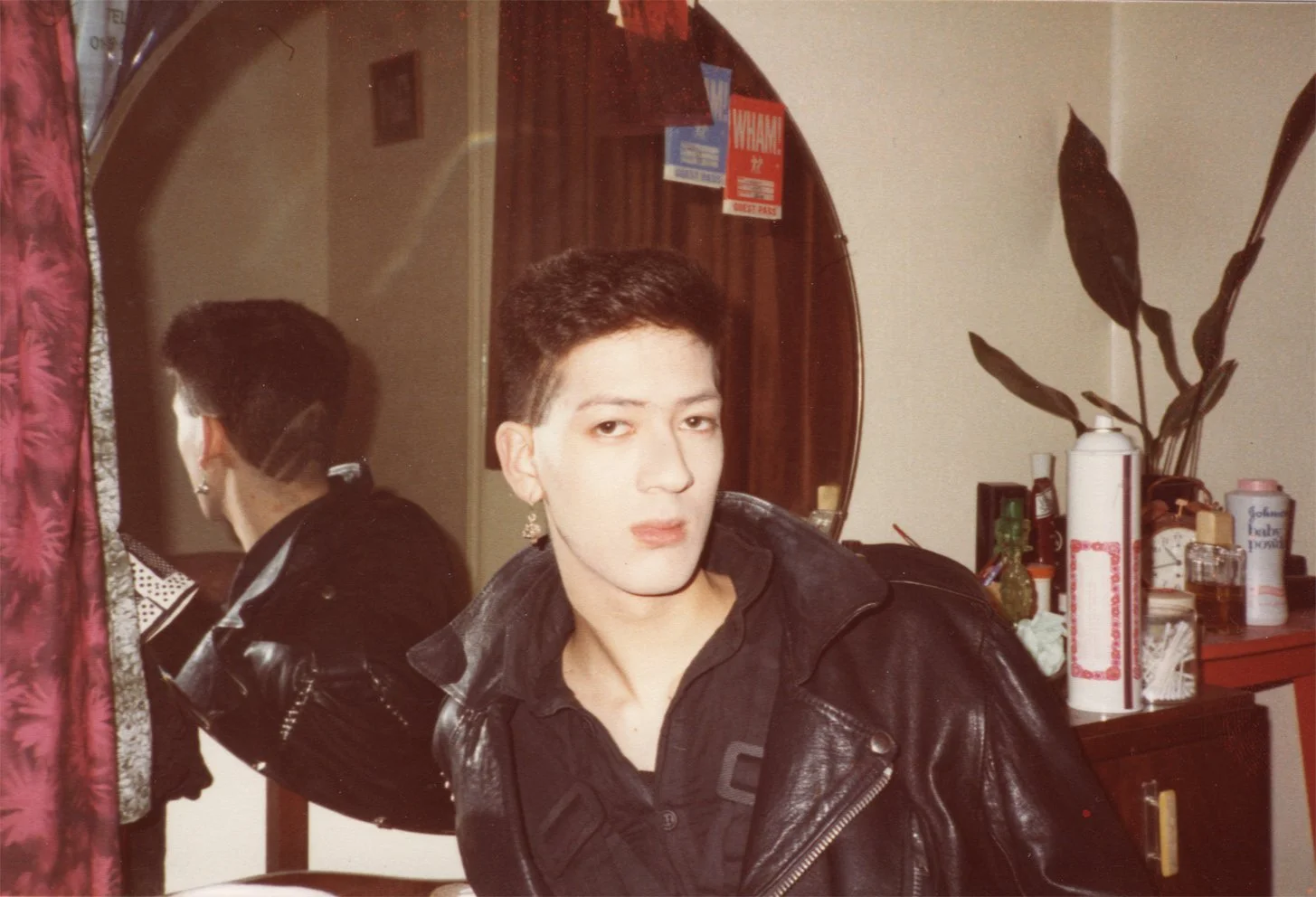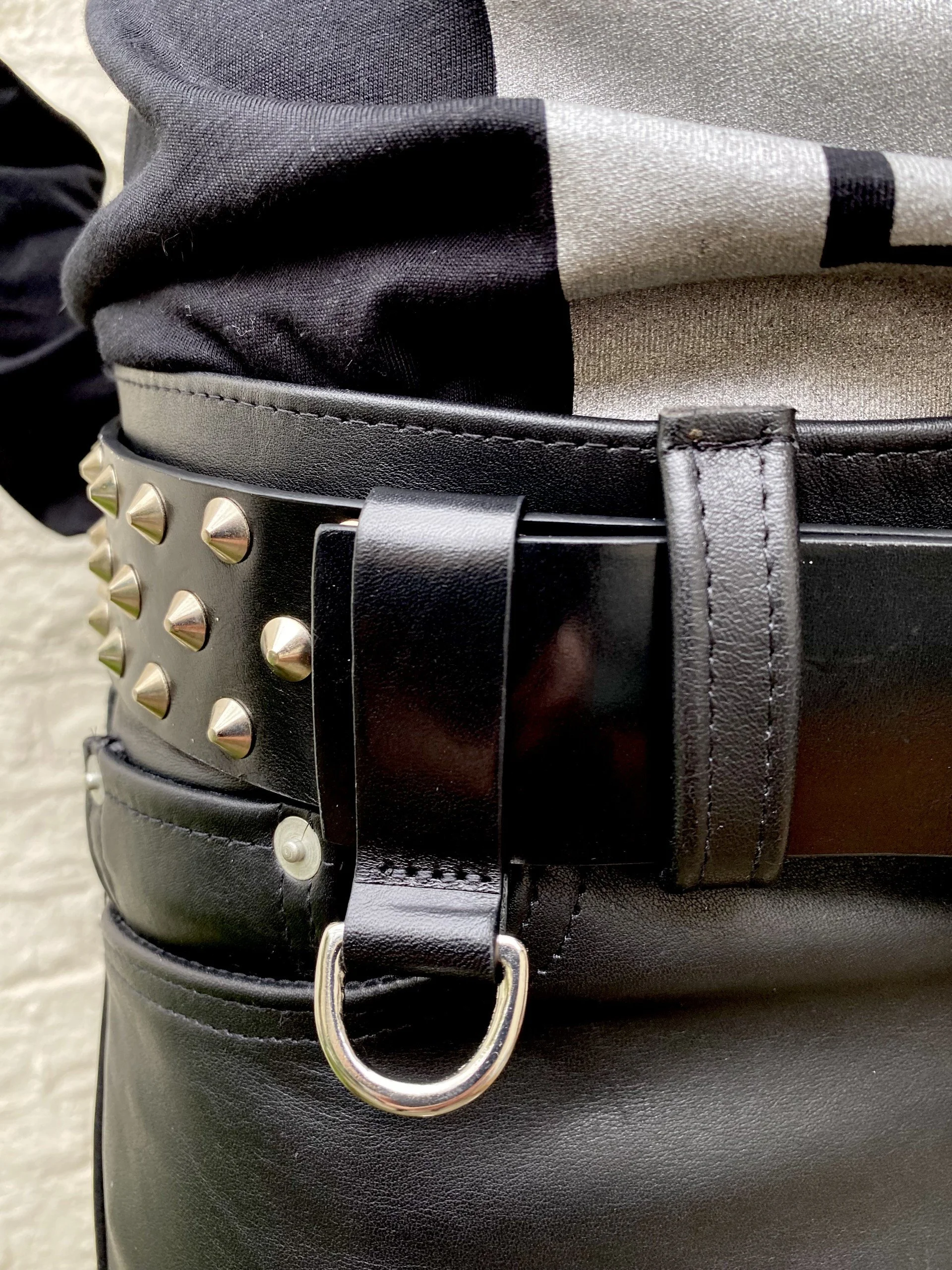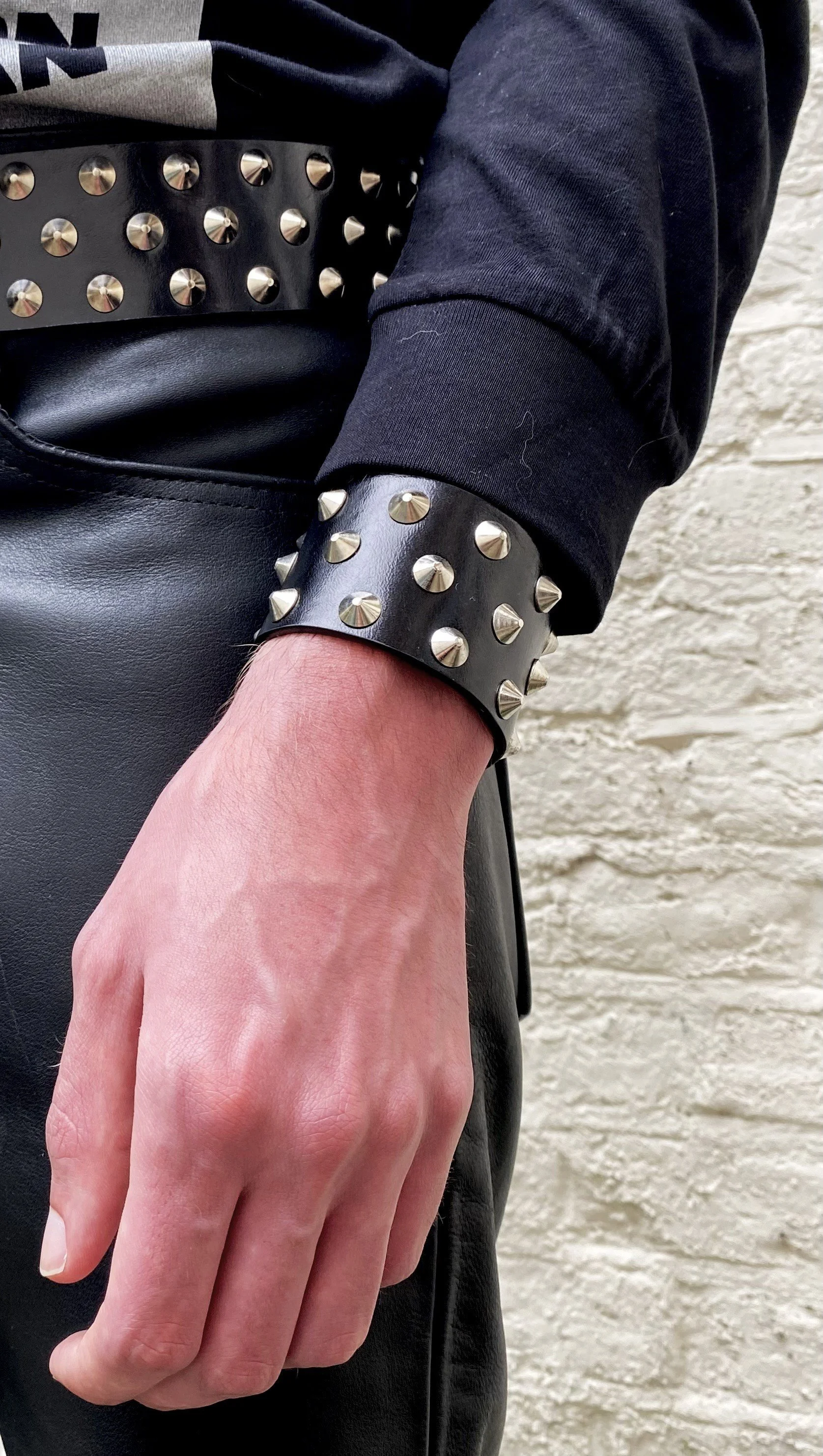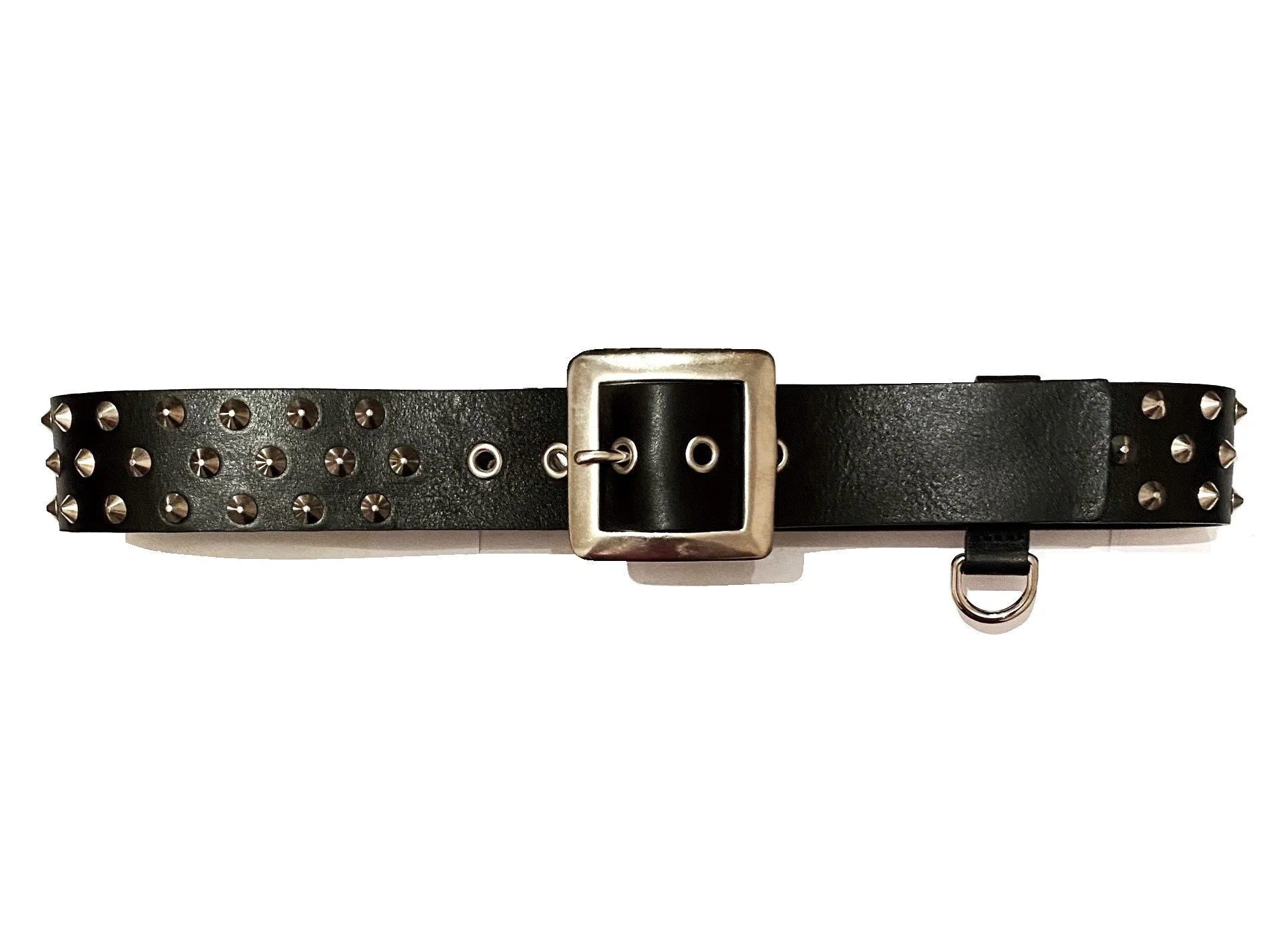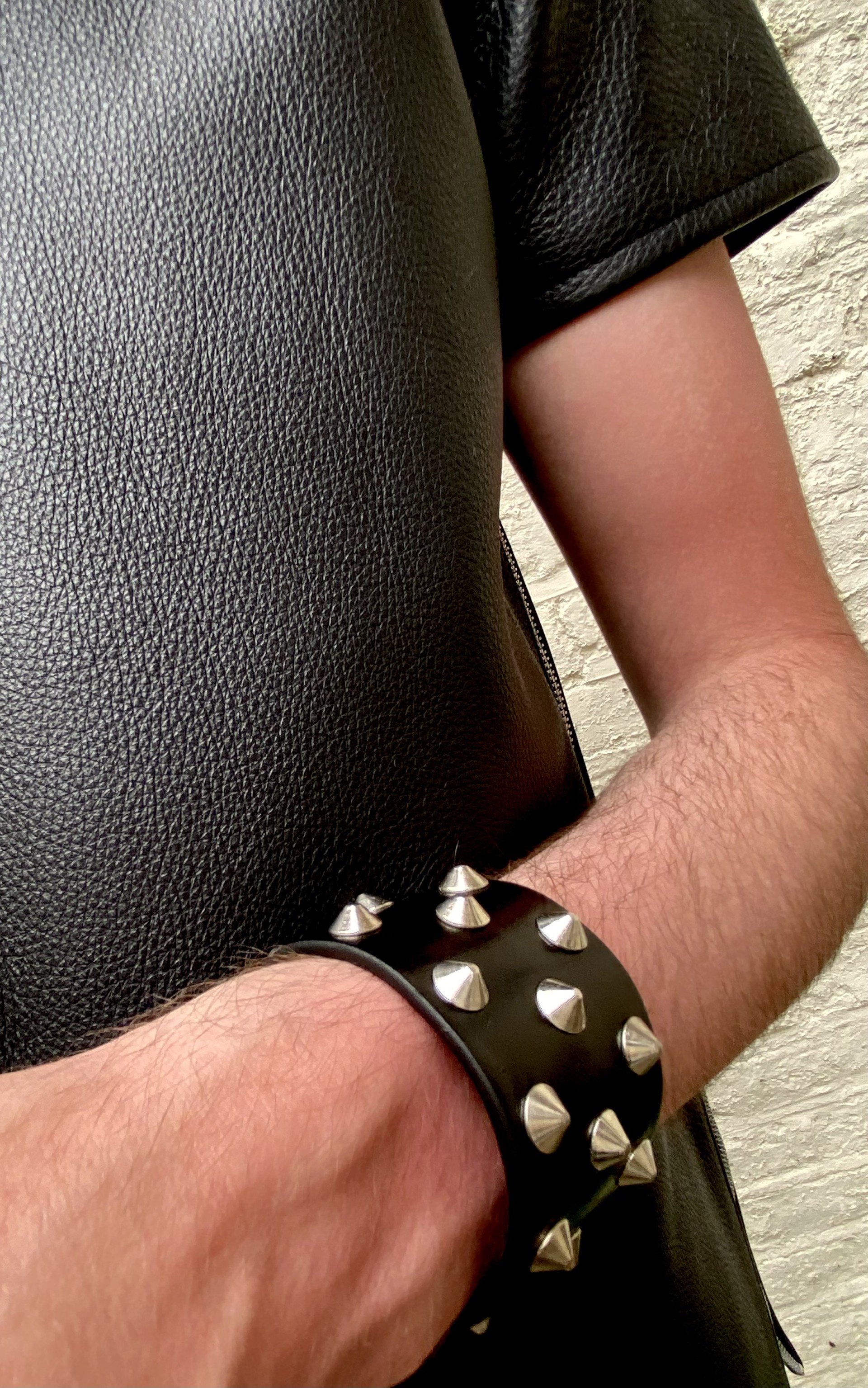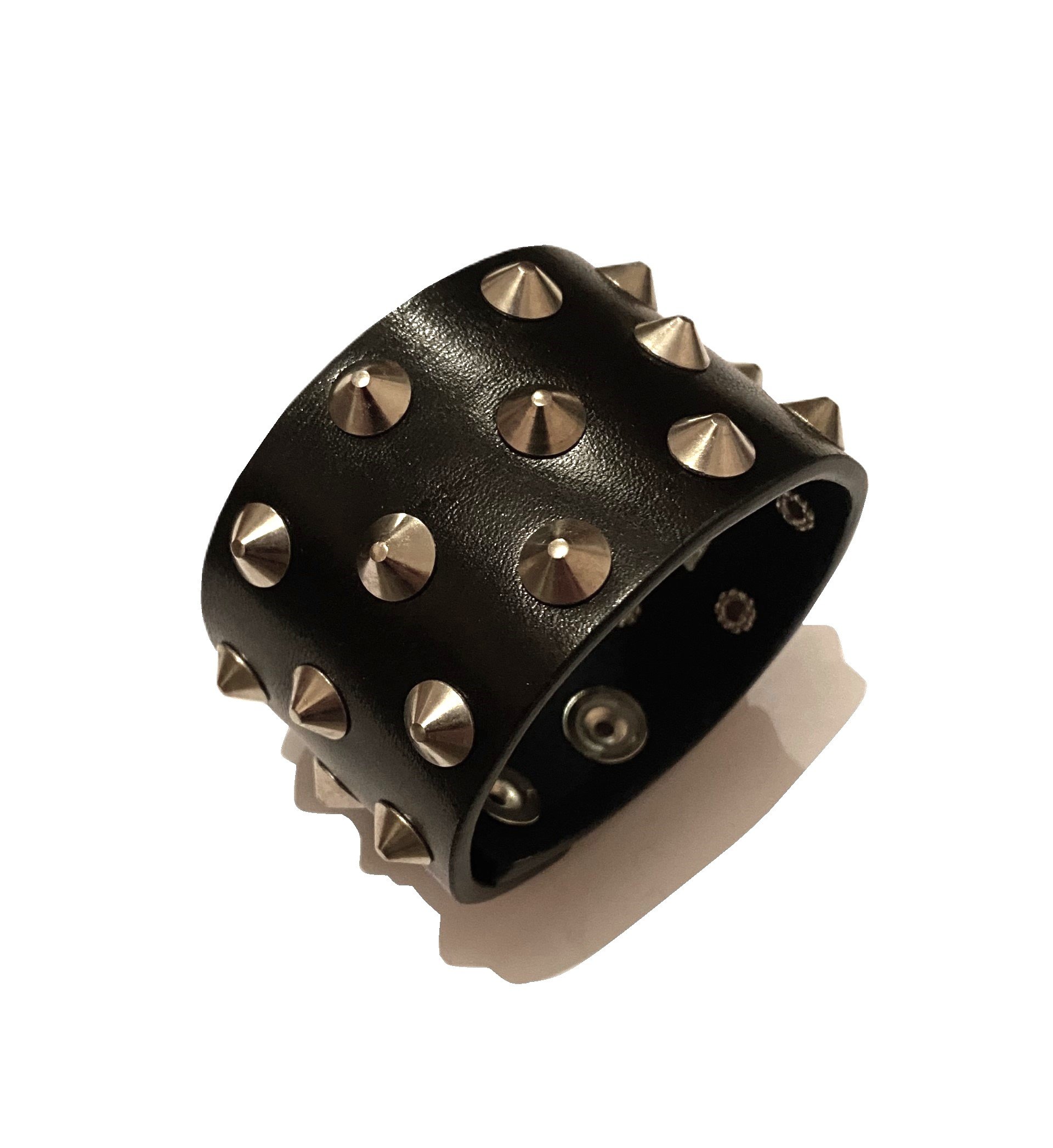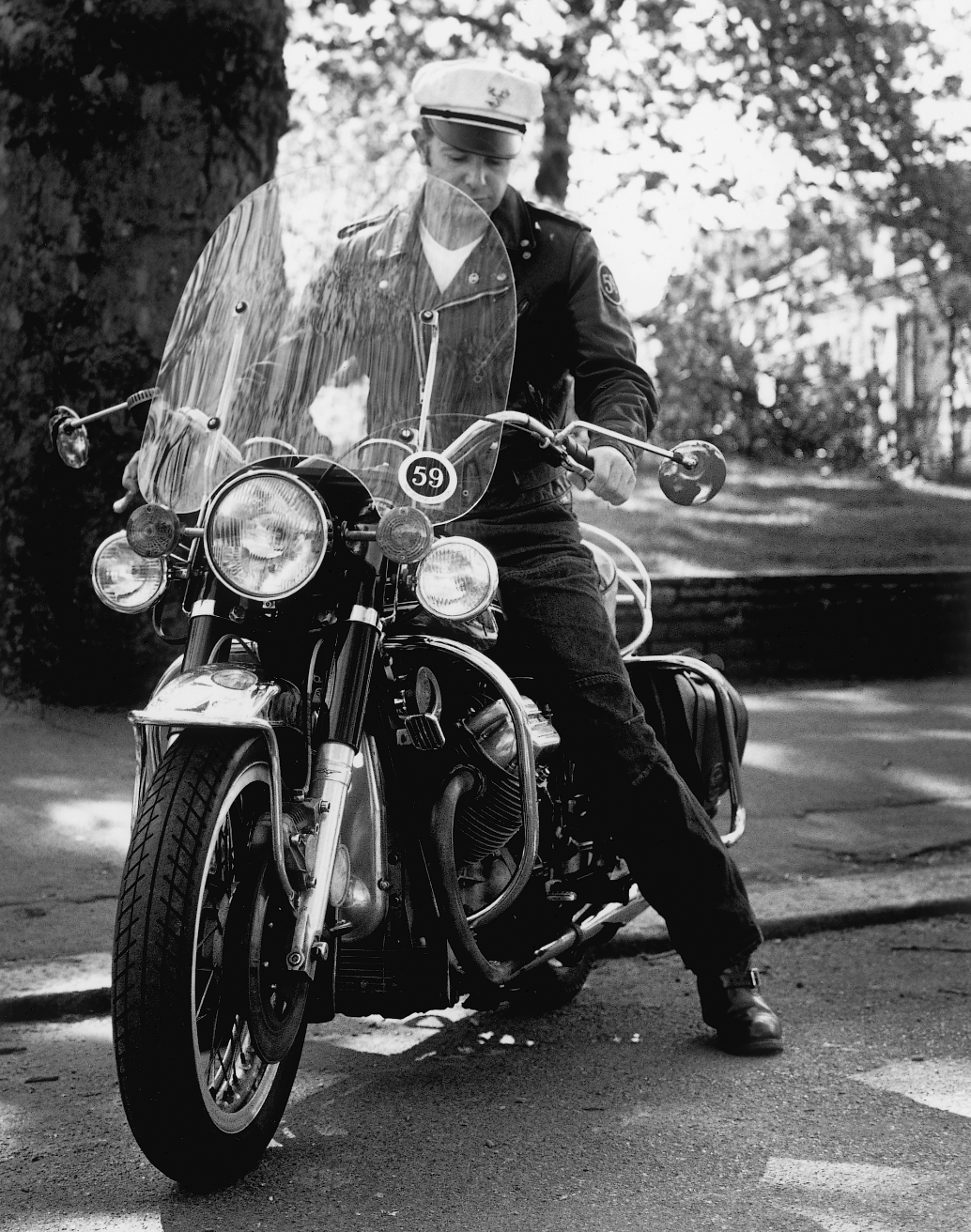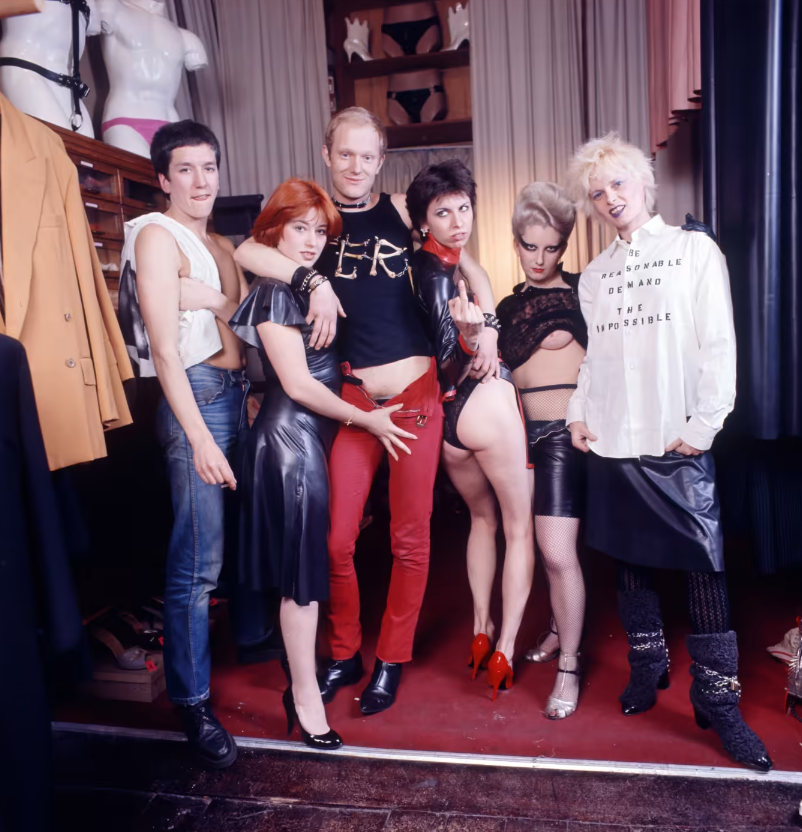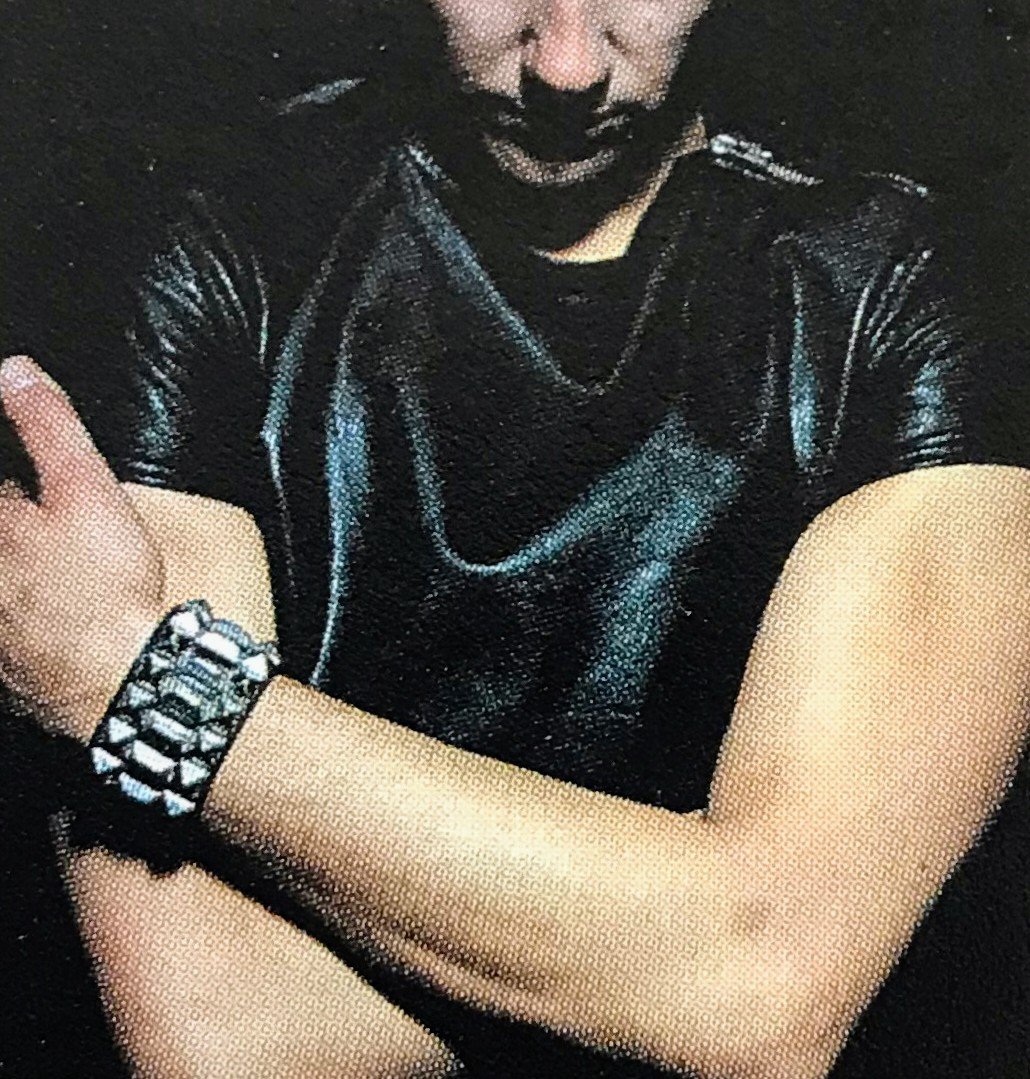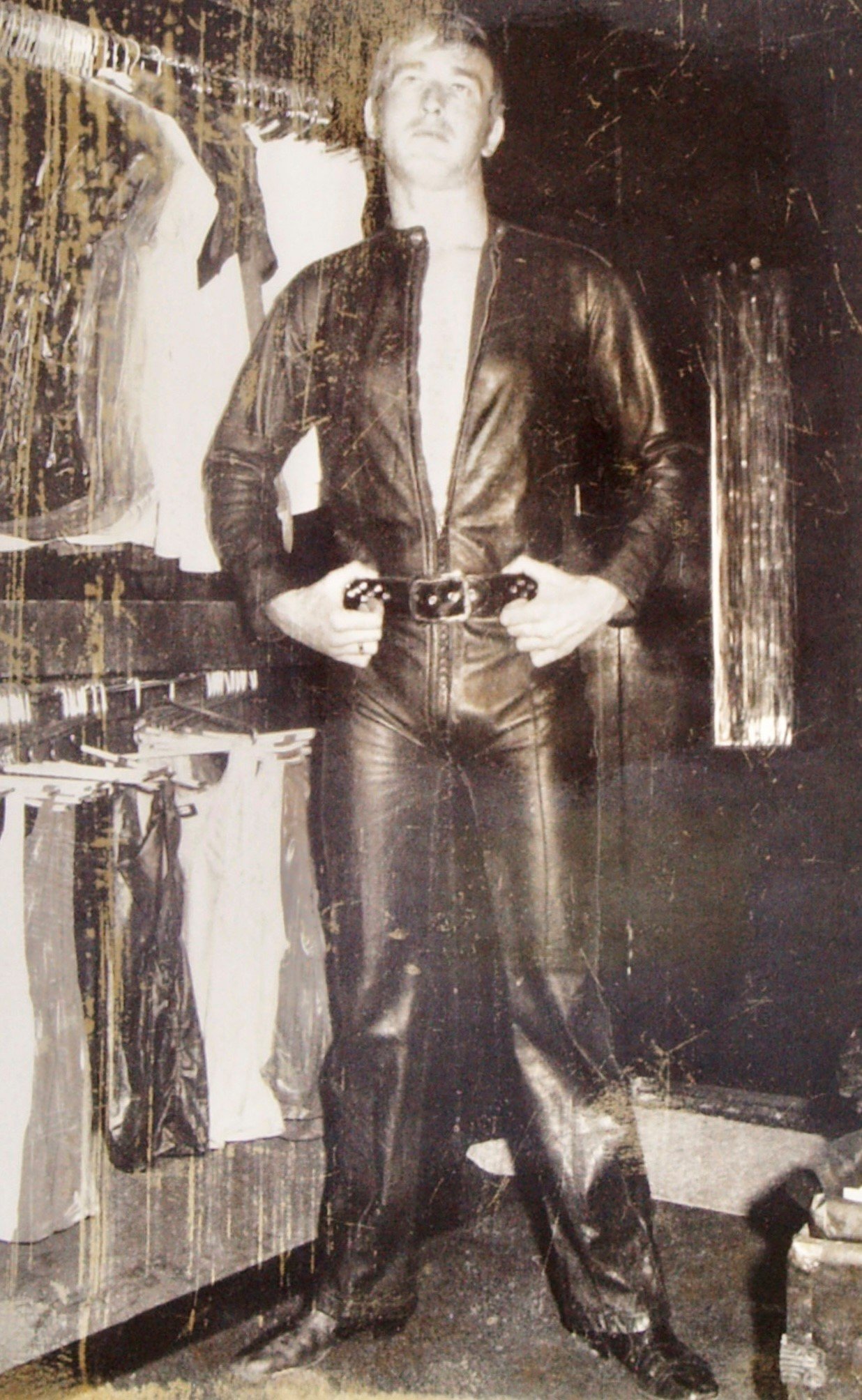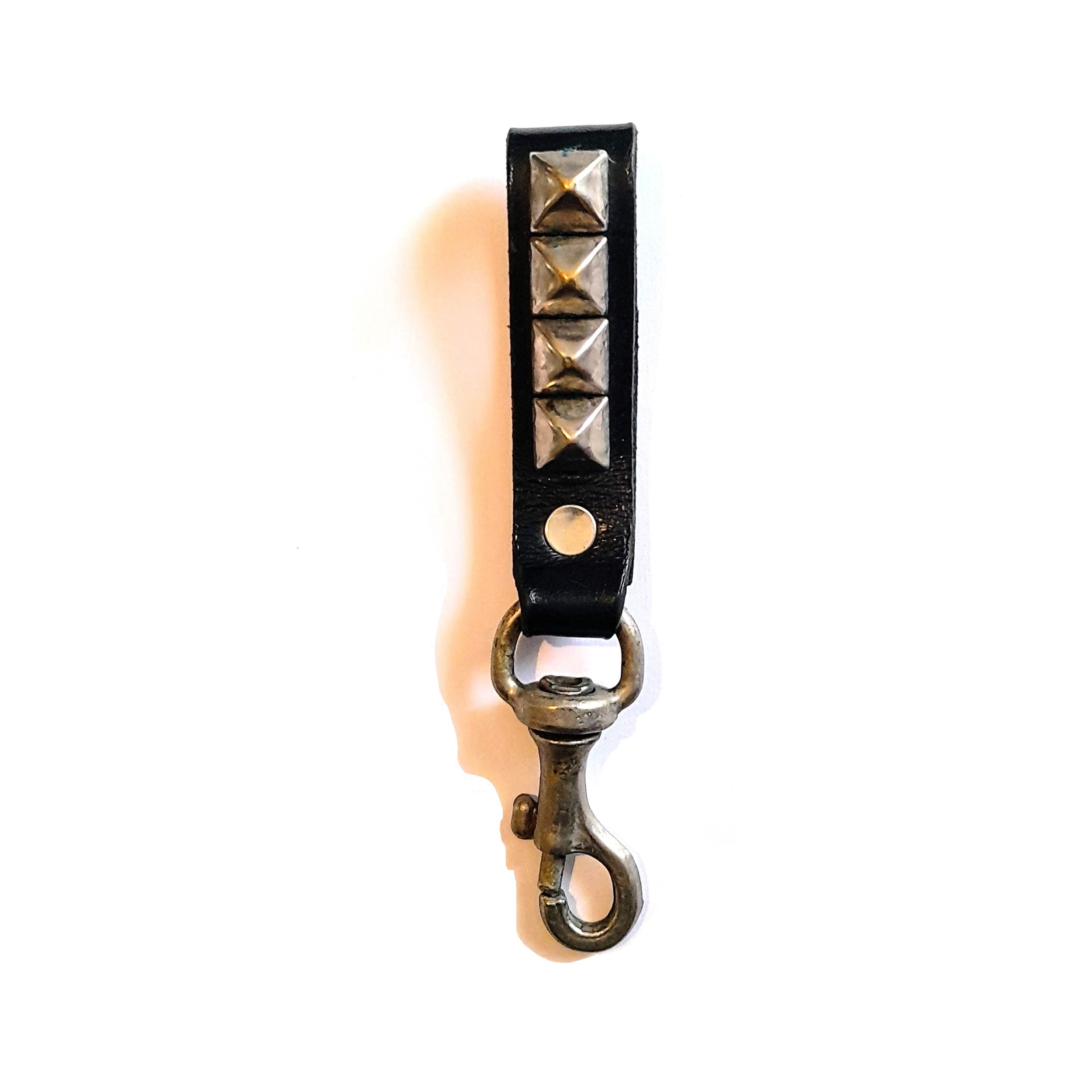Q. Walking into The Contemporary Wardrobe one is confronted with floor to ceiling rails of clothing and accessories with Dave (Carroll) particularly impressed by your collection of Seditionaries boots, John Stevens suits, suede head tonic suits, zoot suits and Leigh Bowery suits. If you were to pic one outfit from the wardrobe you have particular affection for, what would it be and why?
A. Sorry Bridget but that’s an impossible ask. I’d prefer to answer it this way..
When I was a young kid there always seemed to be enticing contests to enter where the first prize would be 5 minutes alone in a toy shop or sweet shop and you could literally take whatever you wanted… So if I were given only 5 minutes in my archive, I would at least try to grab a 1940s zoot suit, a 1960s mod suit and suede coat, the 1950s leather biker jacket that my wife bought from Let it Rock, a 1960s leather jacket by Vince, a 1970s bondage coat by Seditionaries, a pair of rare 1940s fetish shoes, a 70s Swanky Mode dress, and as many 1980s Rachel Auburn dresses as I can possibly carry.
Q. At Contemporary Wardrobe you hold a couple of leather and ciré items of clothing made and designed by The London Leatherman from stockists that put their own labels in. One piece is the LT2 Leather T-shirt with zip on shoulder which has a Let It Rock label sewn in. How did you come to be in the procession of this important piece of fashion history?
A. The leather T-shirt you mention belonged to photographer David Parkinson, who apart from being a key figure in the 60s Leicester mod scene, was one of the first photographers to cover Westwood and McLaren’s shops Let It Rock, Too Fast To Live, Too Young To Die and SEX, also John Krivine and Steph Raynor’s Kings Rd shop Acme Attractions. These shoots were featured in the soft porn men’s magazine Club International. The T-shirt is currently on loan from his partner Val Allam and has just been on display in a punk exhibition at Leicester Museum.
Q. What memories do you have of The London Leatherman clothing, shop or reputation?
A. Between 1973-1976 my partner Ric and I were relentlessly scouring the suburbs of London for deadstock vintage clothes when we came across this curious wooden clapboard fronted shop on Queenstown Road, called The London Leatherman, with its tiny window display containing a few studded belts and accessories, we were very intrigued to find a shop like this in a deeply unfashionable part of Battersea, however it never seemed to be open. It wasn’t until SEX opened in 1975, and found out that Malcolm and Vivienne were stocking the shops leatherwear designs, that we discovered just how important and influential The London Leatherman was on the international S&M and fetish scene.
Q. In 1993 you curated the exhibition Vive Le Punk at your venue the Horse Hospital in Central London, which Dave has always describes to people as being the definitive exhibition when it comes to Westwood McLaren clothing. Whether it be leather clothing or accessories, who of the punk rockers McLaren and Westwood dressed looked the best in leather?
A. No question, my dear friend Jordan Mooney always looked amazing in her leather outfits, and in particular that fabulous leather cape and pencil skirt outfit from SEX, she looked like she had stepped off the pages of Atomage magazine, and it was featured in John Samson’s seminal documentary Dressing for Pleasure. Jordan was totally fearless in the way she dressed and became the perfect role model for Malcolm’s belief that their SEX leather outfits should be worn in the office.
Q. You actively participated in many of the youth-cultures and eras of clothing that make up your archive, from mod to soul boy, punk rock to 80s club culture. Does your bona fide passion for clothing, and seeking out conversations around these clothes stem from being a mod or something else?
A. I would say it was almost entirely down to those formative years I spent in the mod movement. When the mod scene ended around 1966, I was out on a limb clothes-wise because hippie robes just didn’t have the subtlety and sharp elegance I was looking for. However, around this time there was a revival of clothes from the 1930s-1940s being worn by a couple of bands I was into such as Family and the Purple Gang. I started collecting and wearing second-hand men’s clothing from this period. Although I think subconsciously those glamourous Hollywood styles had already been instilled in me as a kid through watching film noir movies on the TV. I became quite obsessed with the 1930s style during the mid 1960s, and this really shaped my future taste not only in clothes, but also art, architecture and design leaving a lasting impression on me to this day.
Q. Yours and our mutual friend Lloyd Johnson (of Johnson’s, La Rocka!) was also a mod, his love of clothing is equally as passionate, and you both went on to have esteemed careers in clothing. When out and about I’ve seen you and Lloyd in deep conversation, other than mod what would you say are your other mutual clothing interests?
A. Ha ha ha, we were more than likely discussing a look we’ve seen, or the way an outfit has been worn, or even just a detail that has impressed us. We are both more than just a bit fanatical about obscure subcultures and men’s and women’s clothing styles from the last 100 years or so, but it’s modernism and its origins that really hits the spot, and this shared passion also covers all aspects of design, art, film and architecture. Having said that we are also equally fascinated by those rarefied individualists who dare to wear clothes with attitude and commitment today, whatever look they may be into. This is almost certainly because style been such a huge part of our lives. And let’s not forget we were fortunate enough to have been involved in pretty much every clothing revival since the mid 60s, and we are now both keen to share our knowledge and experience with those individuals who are curious enough to inquire.
Q. Since COVID there’s been a trend in vintage clothing dealers closing their shops to open by-appointment showrooms where they instead offer a fashion consultancy service with items they loan out to stylists, exhibitions and fashion houses. A trend has also been to call the clothing they’ve bought second hand or at auction their ‘personal archive’ with the fashion press hailing them as experts and some as ‘guru’s’, yet having little to no provenance. You presented the concept of having a loanable archive for the fashion industry to access decades ago, an archive you have genuine and first-hand knowledge in. Why do you think so many vintage clothes dealers are making this move now?
A. I can only assume that this trend goes hand in hand with the current plethora of fashion influencers/forecasters on social media, that have also set themselves up as self-aggrandising leading lights for a particular generation who need to be shown what to wear, and slavishly follow them. True vintage clothes have always been hard to find, but what I find most shocking is that these new personal archives and some shops are presenting quite recent retro clothes designs from high street stores such as All Saints, Reiss, Zara and H&M etc and palming them off as vintage, not only to an innocent public, but those professional design teams and researchers of big name fashion brands who seem to be seduced by these pretentiously curated archives and will happily buy into it.
It puts me in mind of a prediction an academic friend made in the late 1960s, that within our lifetime modern non-descript artifacts and clothing would be displayed in museums purely because they have dust on them.
Q. Your book Rebel Threads is a must have for anyone with an interest in fashion styling and 20th century clothing. How did you find the process of working on your own book? And how did you edit your huge archive/ wardrobe down to 328 pages? With the amount of fantastic clothes and knowledge you have, you could’ve easily produced multiple volumes. Will you do more books?
A. Having had many years practice as a stylist I love the editing process, so choosing clothes for the book was relatively easy and came naturally, knowing what instinctively feels right to me in a composition and featuring just enough of those clothes to tell the story and no more.
It’s always been important to me that whoever is wearing the clothes look as if they have always worn them, or at least the outfit belongs to them, likewise when I’m designing a set, a shop or exhibition I try to do it in a way that brings people to believe it has always been there.
I plan to do at least two more photographic books, one that features some of the best of the collection, and another sort of mod handbook, which is going to focus on the style of the clothes, and their subtle details, often lost or not even acknowledged in other publications.
Q. To date, what would you say has been your career highlight?
I have been lucky enough to have such a varied career it’s almost impossible pin it down to one highlight, instead here are a few I’m most proud of..
Shop design: Nostalgia of Mud
Styling: a photo of David Bowie peeping out of a Yohji Yamamoto coat
Production Design: the music video, Only When I Loose Myself, Depeche Mode
Costume Design: the movie Hackers
Entity: The Horse Hospital
Q. What are you working on for the remainder of 2023?
A. I’m putting together a semi-biographical exhibition at the Horse Hospital for 2024 about my life and career loosely based around 3 shops I designed, PX, Worlds End and Nostalgia of Mud, which will heavily feature the many diverse influences that have played a part in almost everything I have done..
Signed copies of Roger’s book Rebel Threads are available to purchase here: Rebel Threads by Roger K Burton (Signed) — The Horse Hospital





